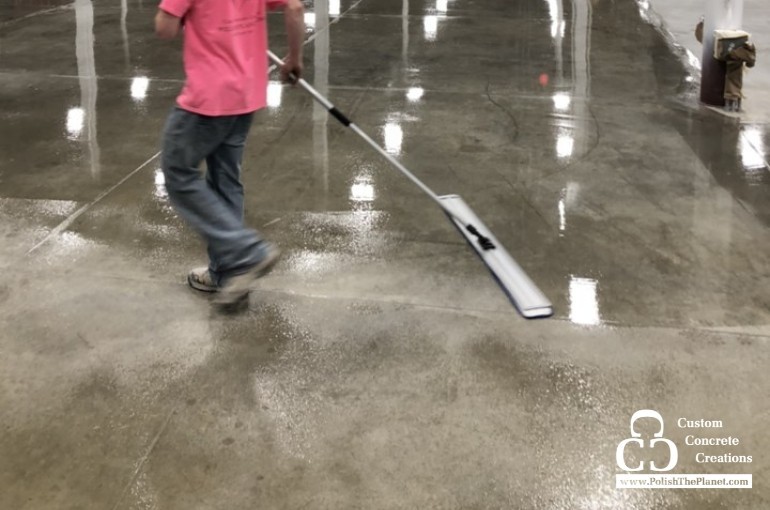
When it comes to protecting your concrete floors, you have the options of damp proofing vs. waterproofing. Both methods prevent moisture-related issues, but they have different benefits, purposes and appropriate applications. Below we go over the differences so you can decide which is best for your floors!
All about damp proofing
The primary goal of damp proofing is to resist moisture vapor transmission, which can cause condensation and result in dampness on the surface. Damp proofing helps control the movement of moisture through concrete. It involves applying a damp-proof membrane (DPM) to the surface, or incorporating an additive during the concrete mixing process.
Benefits
Damp proofing is cost-effective, helps with moisture control and is easy to apply. Damp proofing helps prevent the passage of moisture from the ground, preventing rising dampness and condensation on the surface. It is generally less expensive than waterproofing methods, making it an attractive choice for areas with lower water exposure. These types of treatments are relatively easy to apply and the materials required are readily available.
Best applications
This method is suitable for areas with low to moderate water exposure, such as basements, storage rooms and areas with minimal direct water contact. It is effective in preventing moisture-related issues, such as mold growth and surface dampness, in situations where standing water or heavy water pressure is not a concern.
All about waterproofing
Waterproofing concrete floors is a more comprehensive approach that aims to prevent water damage from both the surface and below the concrete slab. It involves applying waterproof membranes, coatings or cementitious systems to create a barrier against water penetration.
Benefits
The benefits of waterproofing include protection against water, versatility and it’s a long-lasting solution. Waterproofing provides a robust defense against water intrusion, protecting the concrete and underlying structures from damage caused by prolonged exposure to water. It can be tailored to specific requirements and can withstand varying levels of hydrostatic pressure, making them suitable for high water exposure areas. When properly applied and maintained, waterproofing systems offer durable protection, extending the lifespan of the concrete floors.
Best applications
Waterproofing is essential in areas exposed to significant water sources or high hydrostatic pressure, such as swimming pools, basements prone to flooding, bathrooms and areas subjected to heavy rainfall. It is particularly important in structures where water-tightness is critical to prevent structural deterioration and maintain a healthy environment.
Which is best for your floors: damp proofing vs waterproofing?
The choice between damp proofing and waterproofing depends on various factors, including the location, water exposure, budget and intended use of the space. It is crucial to assess the specific requirements of your project and consult with a professional to determine the most suitable method.
Contact us
If you’re in the midst of deciding between damp proofing vs waterproofing, we can help you make an informed decision to ensure the longevity and functionality of your concrete floors. Overall, damp proofing is suitable for areas with low water exposure, while waterproofing provides comprehensive protection in high-moisture environments. Contact us today to discuss your concrete flooring needs!
